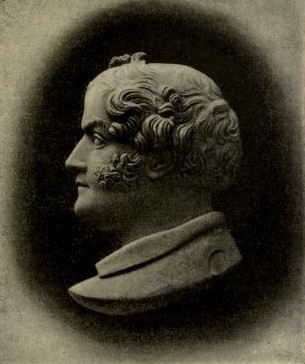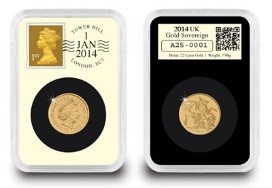Posts Tagged ‘George and the Dragon’
The Making of a British Icon
How an Italian engraver produced the most British coin of all time
Across the world, one coin is seen to epitomise all that it is British in a way that compares with nothing else. That coin is the Gold Sovereign. And at the centre of its international reputation is a quintessentially British design – St. George slaying the dragon.
Yet it is not, as you may first think, the work of a classical British artist, but instead that of the second son of an Italian federal court judge, who only came to England just two years before his portrayal of St. George and the Dragon first adorned a British coin in 1817.

Cameo of Benedetto Pistrucci, by his daughter c. 1850
In fact well before his arrival in England in 1815, Pistrucci was already well established as a leading gem engraver and producer of fine cameos amongst European high society. He rapidly made an impression on his arrival in London, winning the approval of the well-known antiquarian William Richard Hamilton.
Despite having no coin or medal experience, he was quickly commissioned by the Master of the Mint Wellesley Pole, brother of the Duke of Wellington, to produce a new portrait of George III as part of the Great Recoinage. His model, created in the unusual medium of red jasper, was re-engraved by Thomas Wyon for its final use on coinage losing, in Pistrucci’s eyes at least, much of the detail.
However, his work was clearly of sufficient quality to impress Pole, who followed up with a commission for the design that has forever since been the synonymous with the name Benedetto Pistrucci – St. George and the Dragon.
A design nearly lost the annals of history
Yet within just eight years it looked like Pistrucci’s design might disappear forever, as the Royal Mint changed the Sovereign reverse design to an heraldic shield, which was to remain in place for the next 46 years.
It was only a drive to improve the design quality of the coinage, led by new Deputy Master, Charles Fremantle that saw the re-introduction of St. George in 1871. However, both reverse designs were struck concurrently until 1887 when the Chancellor of the Exchequer declared that “by tradition and recommended by the great beauty of the design” Pistrucci’s design should once again appear on all Gold Sovereigns.
“The chief coin of the world”
By the mid-1850s the “new” Gold Sovereign had become a coin of true international status. Indeed an official list identifies no fewer than thirty-six colonies and dependencies in which the gold sovereign or half sovereign was recognised as legal tender.
More surprisingly, so great had become the reputation of the British sovereign that it was also in regular use in other countries outside the Empire, including Brazil, Egypt and Portugal.
However, it was the opening of the Sydney branch of the Royal Mint in 1855 following the discovery of gold in Australia that really marked the international growth of the Sovereign. Initially authorised to strike Sovereign’s to a different design, in 1871 Sydney finally started to strike coins of the same designs as the UK (just in time for the Pistrucci revival), only identified by a small “S” mintmark.
Further Australian Royal Mint branches followed in Melbourne in 1871 and Perth in 1899, before the Mint’s reach extended to other Empire countries with branches opening in Ottowa (1899), Bombay (1918) and Pretoria (1923) – all producing Gold Sovereigns.
It is no wonder that the eminent economist of the early 20th Century, Sir John Clapham, proclaimed the Gold sovereign as “the chief coin of the world”.
A worldwide modern icon – good enough for 007
The last international sovereign was struck in Pretoria in 1932. By then the international interest in Gold Sovereign, which started in Victorian times was well and truly established. And it is a reputation that continues right up to today.
Ian Fleming chose to equip James Bond with 50 Gold Sovereigns in his attaché case in the From Russia with Love, whilst Special Forces are still believed to carry Gold Sovereigns, as an emergency international currency.
In 2012 the Royal Mint once again authorised the striking of the St. George and the Dragon Gold Sovereign outside the UK under licence in India, so great is its popularity amongst the people there.
Reference
“The Royal Sovereign 1489 – 1989”, Ed GP Dyer
“A New History of the Royal Mint”, Christopher Edgar Challis
The Royal Mint Museum Website
________________________________________________________________

The 2014 Gold Sovereign is available in a limited edition DateStamp™ Presentation of just 995 pieces –now sold out.

